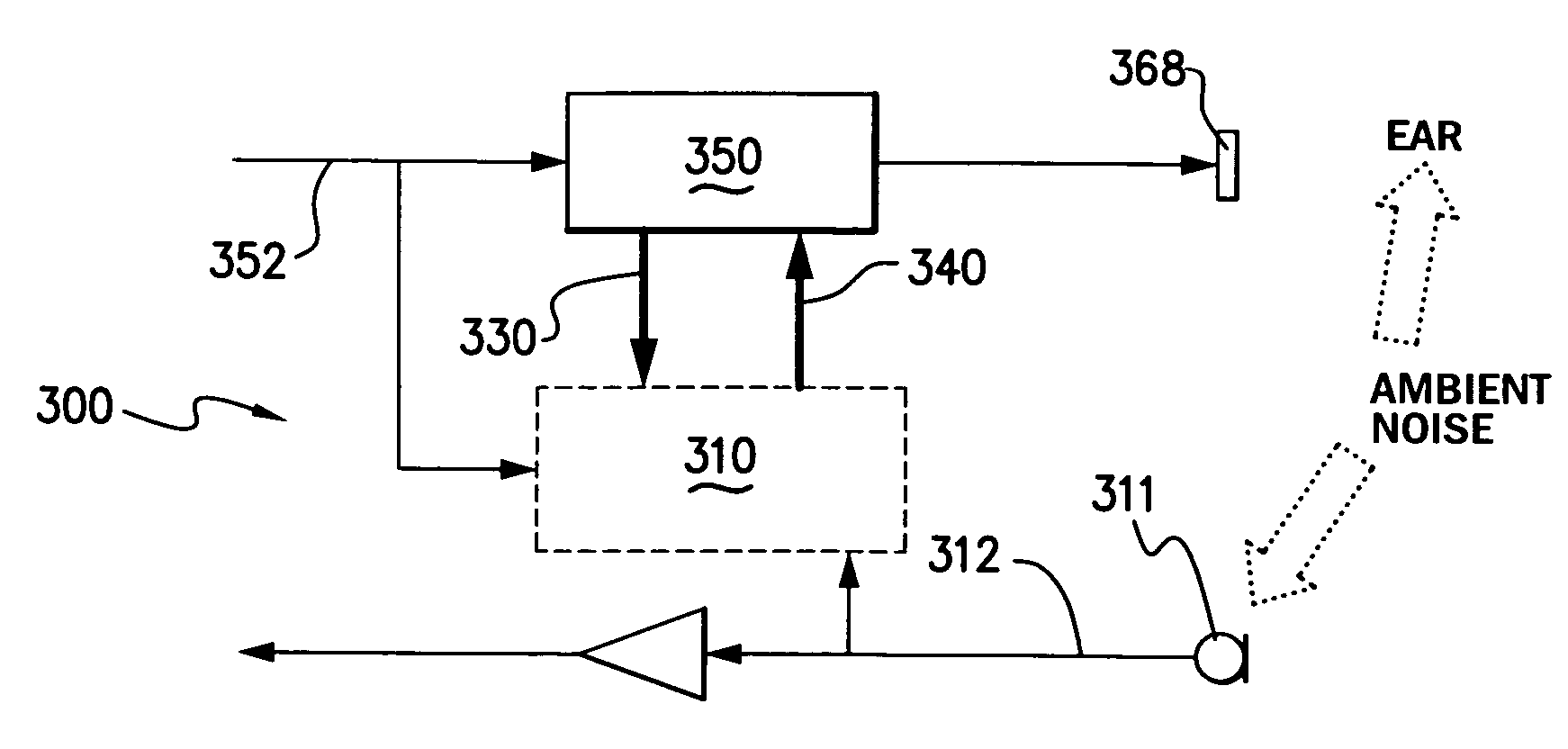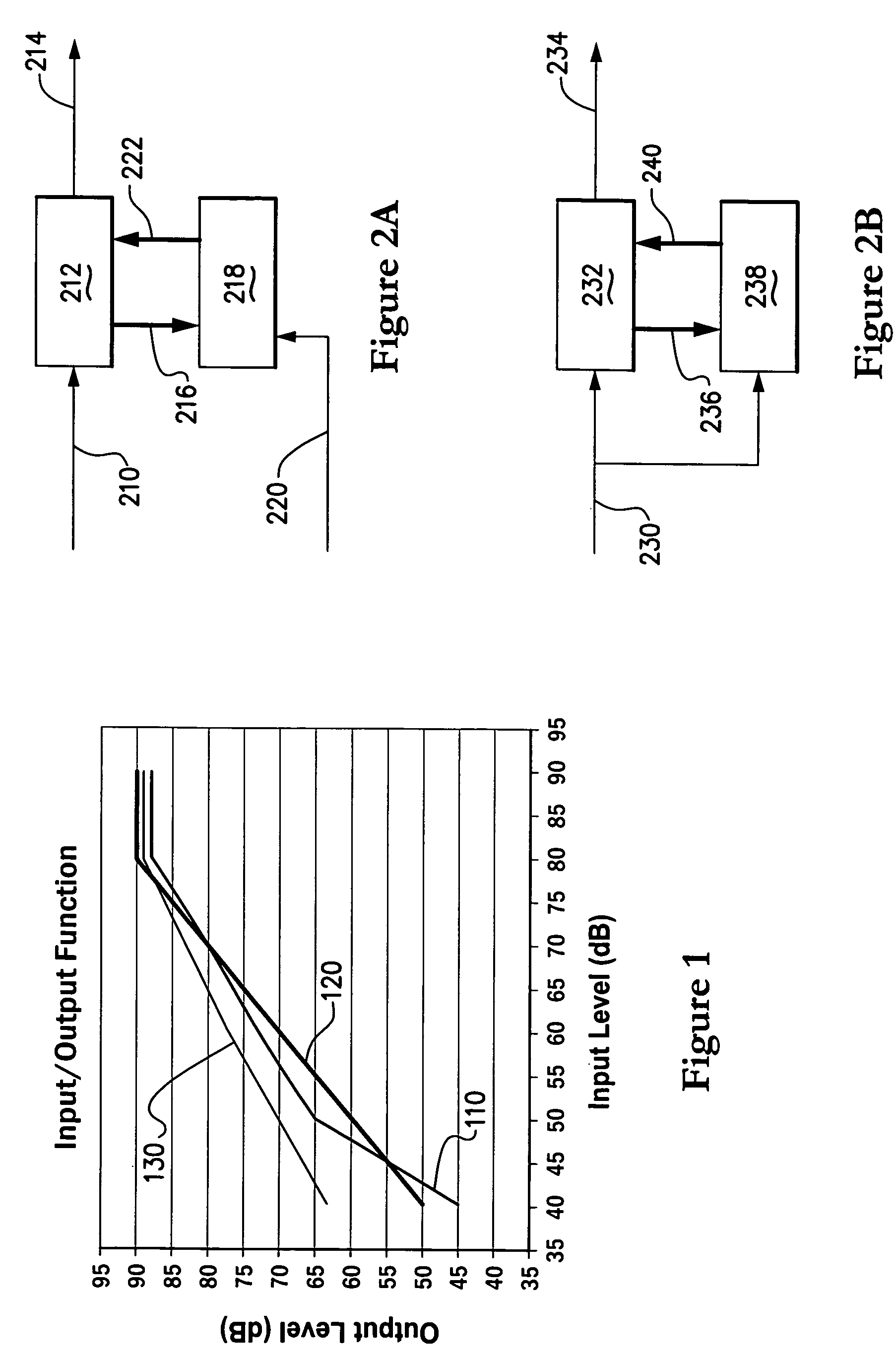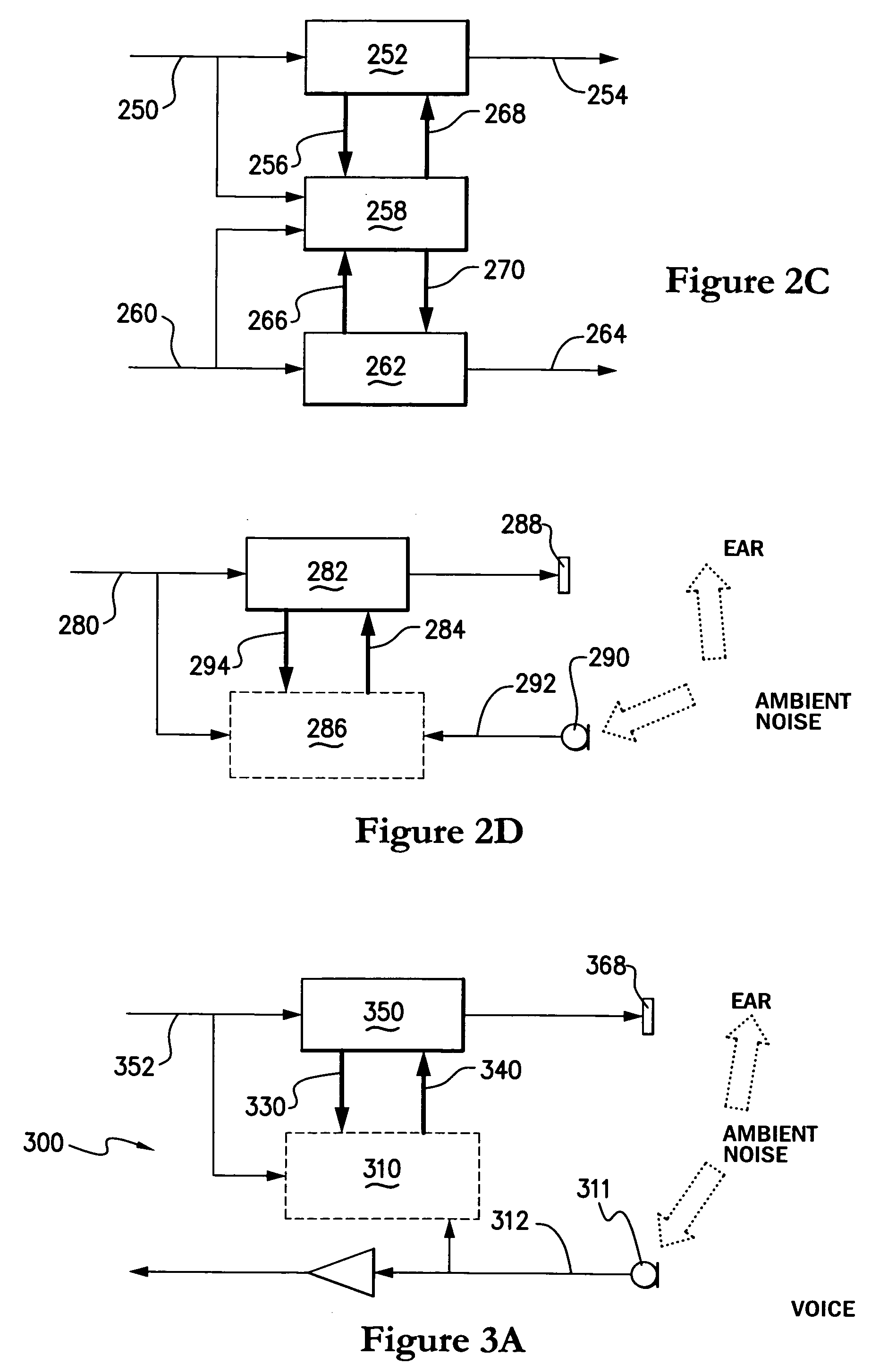Method and apparatus for adaptive sound processing parameters
a sound signal and parameter technology, applied in the field of sound signal processing, can solve problems such as discomfort, trauma, or damage to the auditory system, and achieve the effect of reducing gain and avoiding overly hasty gain increas
- Summary
- Abstract
- Description
- Claims
- Application Information
AI Technical Summary
Benefits of technology
Problems solved by technology
Method used
Image
Examples
first embodiment
[0072]FIG. 2A is a block diagram illustrating the use of a monitored signal condition to adaptively vary at least one signal processing parameter of an ADRO signal processing scheme in accordance with the present invention. Input sound signal 210 is conditioned by an ADRO processor 212 to generate a processed sound signal 214. ADRO processor 212 obtains statistics from processed sound signal 214 and at 216 passes those statistics to an adaptive parameters processor 218. Adaptive parameters processor 218 further monitors a signal condition of a second input signal 220, and adapts processing parameters accordingly, which at 222 are passed to the ADRO processor 212.
second embodiment
[0073]FIG. 2B is a block diagram illustrating the use of a monitored signal condition to adaptively vary at least one signal processing parameter of an ADRO signal processing scheme in accordance with the present invention. Input sound signal 230 is conditioned by an ADRO processor 232 to generate a processed sound signal 234. ADRO processor 232 obtains statistics from processed sound signal 234 and at 236 passes those statistics to an adaptive parameters processor 238. Adaptive parameters processor 238 further monitors a signal condition of input signal 230, and adapts processing parameters accordingly, which at 240 are passed to the ADRO processor 232.
third embodiment
[0074]FIG. 2C is a block diagram illustrating the use of a monitored signal condition to adaptively vary at least one signal processing parameter of an ADRO signal processing scheme in accordance with the present invention. A first input sound signal 250 is conditioned by a first ADRO processor 252 to generate a first processed sound signal 254. First ADRO processor 252 obtains statistics from first processed sound signal 254 and at 256 passes those statistics to an adaptive parameters processor 258. A second input sound signal 260 is conditioned by a second ADRO processor 262 to generate a second processed sound signal 264. Second ADRO processor 262 obtains statistics from second processed sound signal 264 and at 266 passes those statistics to adaptive parameters processor 258. Adaptive parameters processor 258 monitors at least one signal condition of each of input signals 250 and 260, and adapts processing parameters for each ADRO processor 252, 262 accordingly. Thus, the adaptiv...
PUM
 Login to View More
Login to View More Abstract
Description
Claims
Application Information
 Login to View More
Login to View More - R&D
- Intellectual Property
- Life Sciences
- Materials
- Tech Scout
- Unparalleled Data Quality
- Higher Quality Content
- 60% Fewer Hallucinations
Browse by: Latest US Patents, China's latest patents, Technical Efficacy Thesaurus, Application Domain, Technology Topic, Popular Technical Reports.
© 2025 PatSnap. All rights reserved.Legal|Privacy policy|Modern Slavery Act Transparency Statement|Sitemap|About US| Contact US: help@patsnap.com



